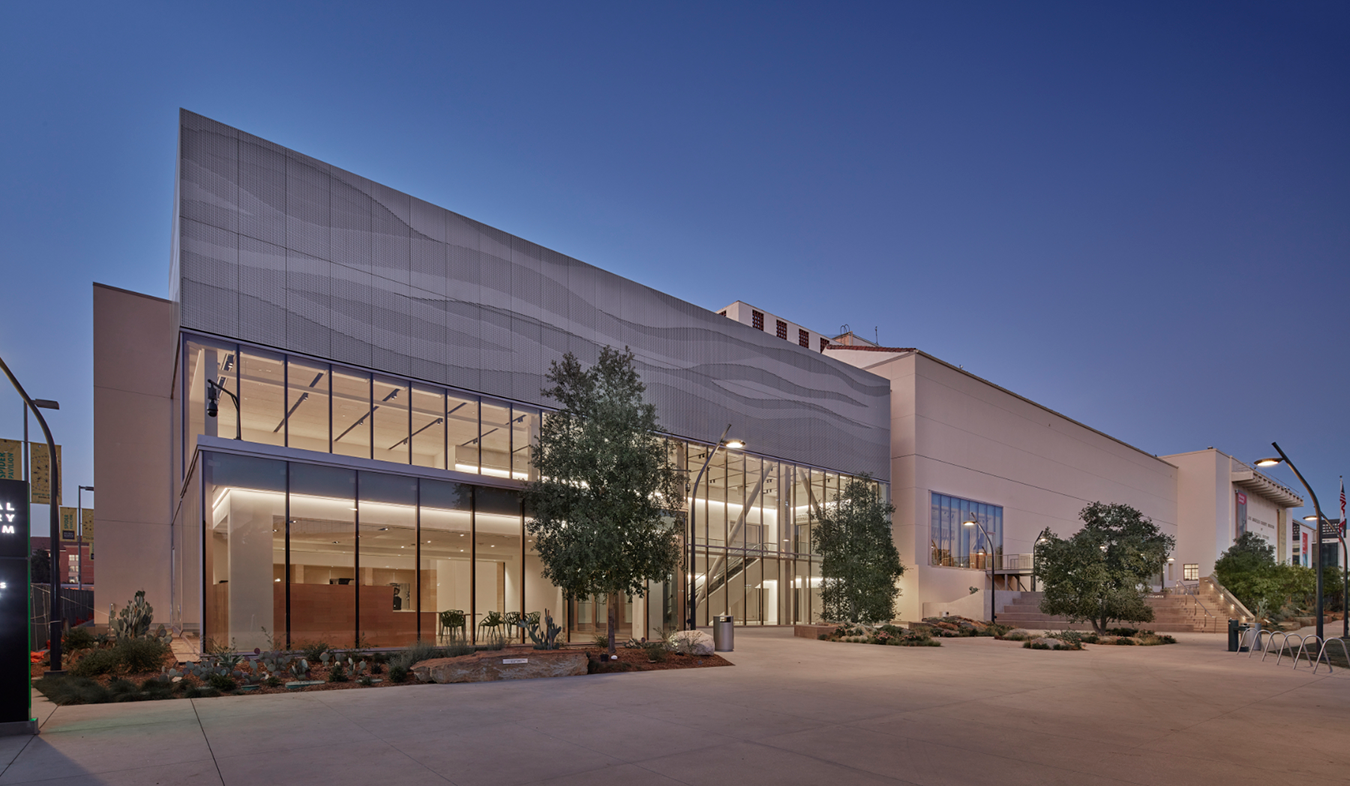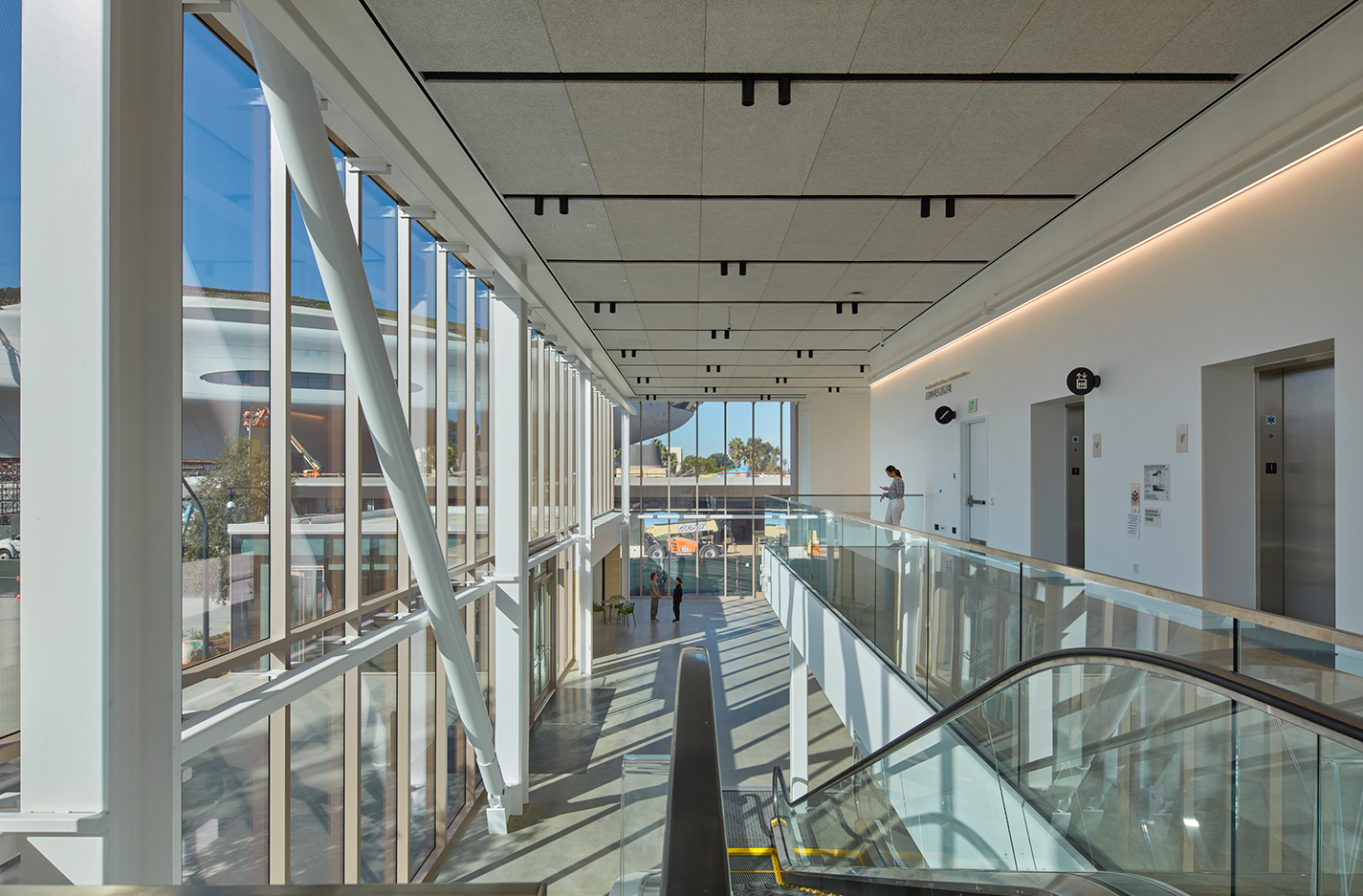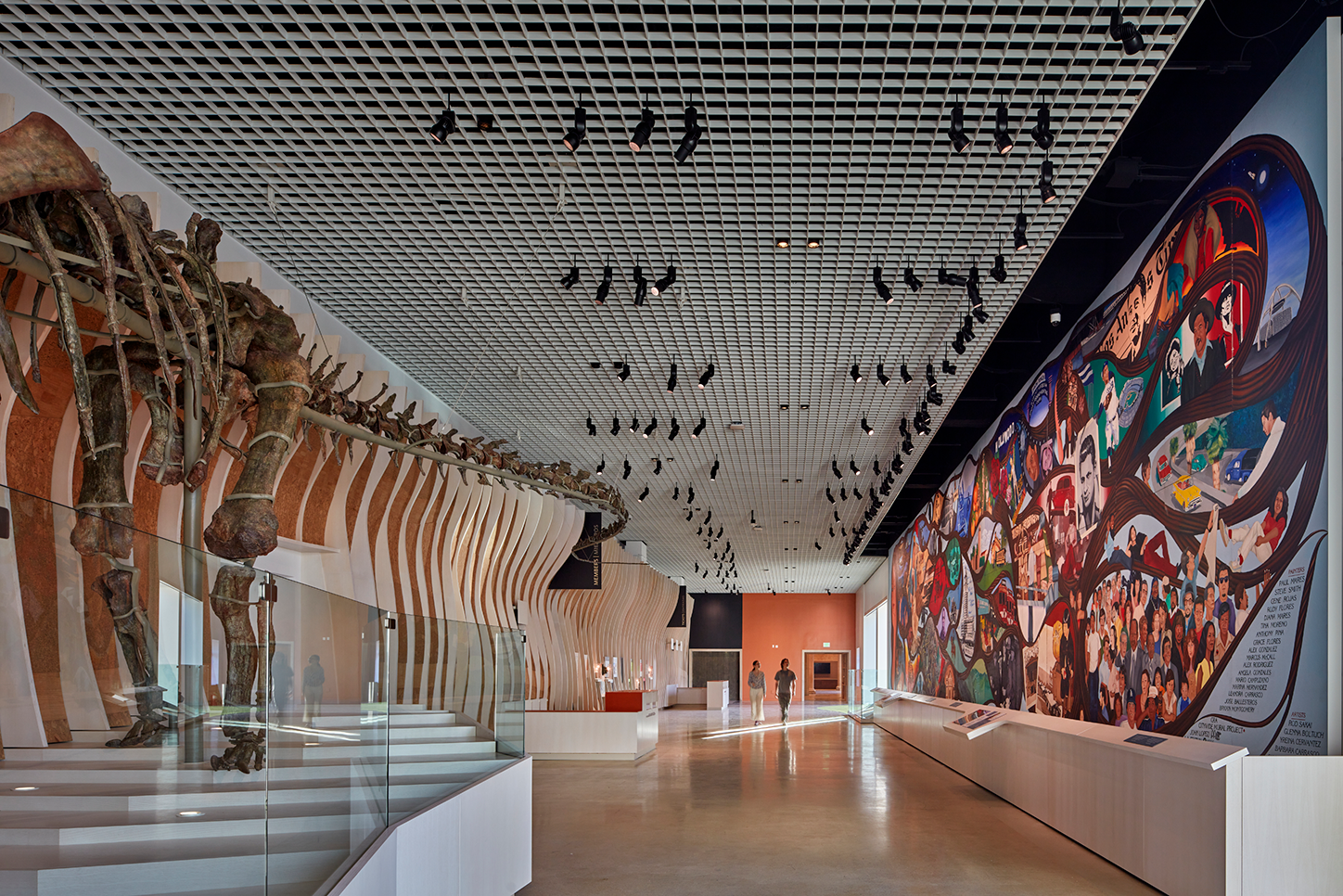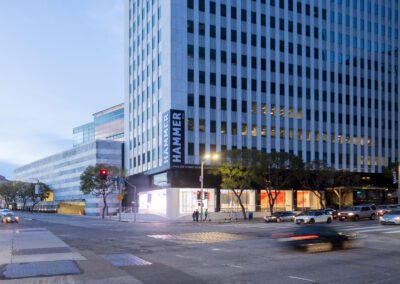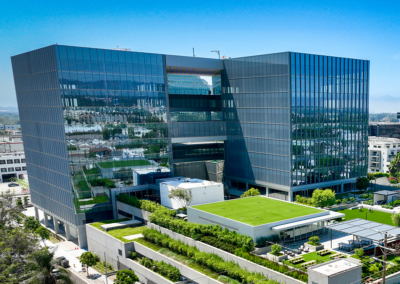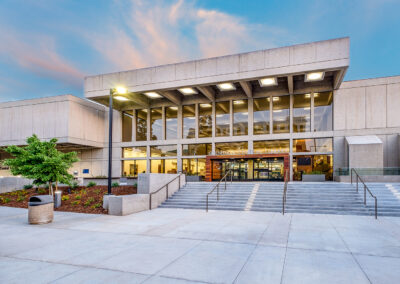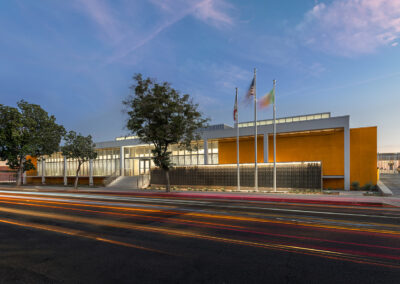Team
- Architect: CO Architects, Frederick Fisher and Partners (Commons Expansion)
- Contractor: MATT Construction
Awards
Natural History Museum of Los Angeles County – 1913 Building Seismic Rehabilitation
- Outstanding Achievement in Historic Preservation, 2009 California Preservation Foundation
- Preservation Award, 2011 Los Angeles Conservancy
-
Award of Excellence – Retrofit / Alteration Category, 2012 SEAOC Excellence in Structural Engineering Awards
JAMA’s relationship with the Natural History Museum of LA County has endured nearly two decades, from the initial campus renovation to its most current expansion efforts. Throughout, the firm has leveraged our understanding of museum operations to develop design approaches that consider construction phasing strategies to minimize disruption to the Museum and keep it operational during construction. JAMA’s efforts have spanned new construction, historic rehabilitations, modernizations, seismic upgrades, and specialty structures.
1913 Building (2010)
Listed on the California Register of Historical Buildings for its ornate exterior masonry walls and the Beaux Arts details of the central rotunda, the fragility of the materials and their age made the voluntary upgrade to the unreinforced masonry and existing steel-frame structure a distinct challenge.
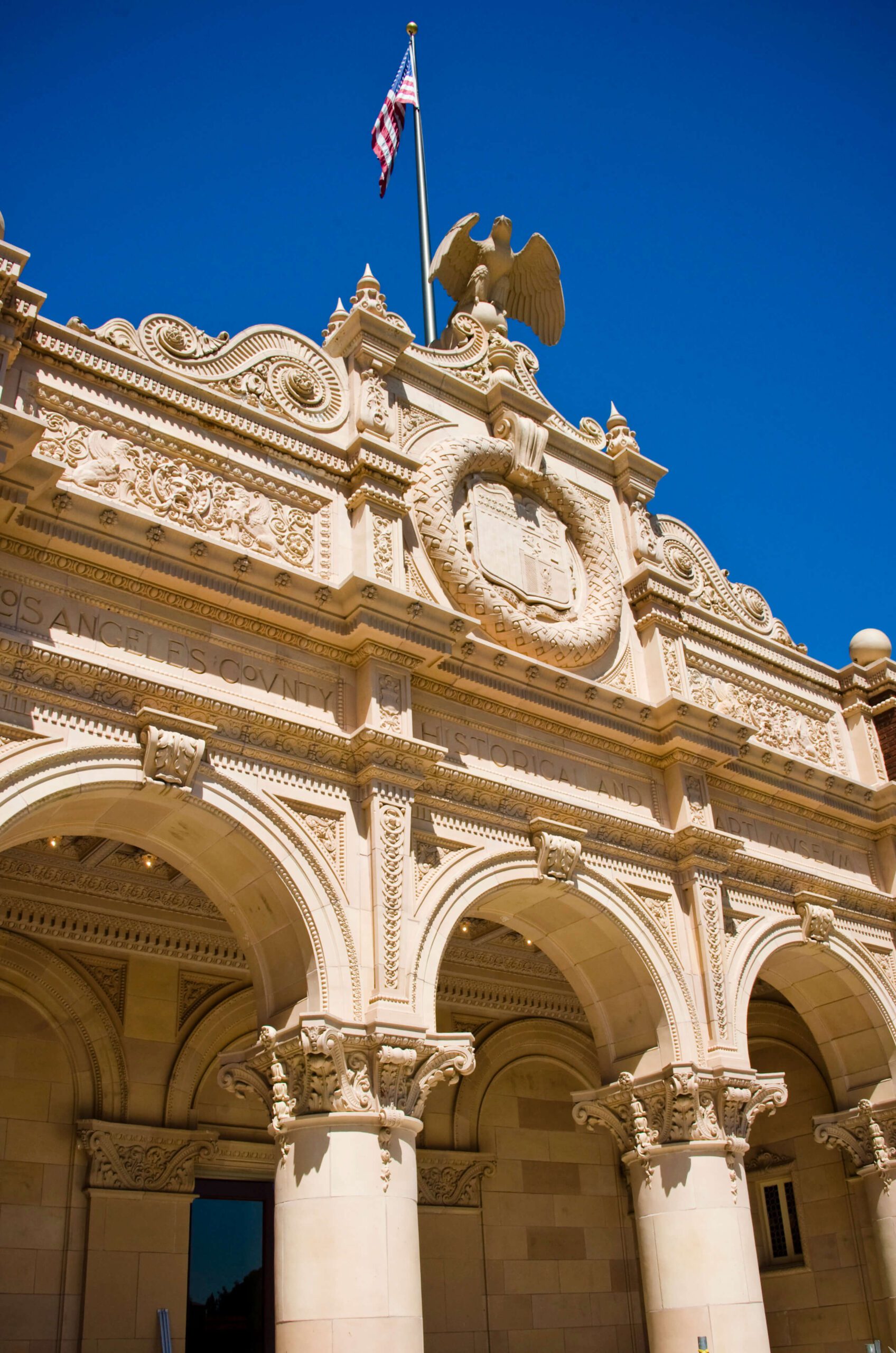
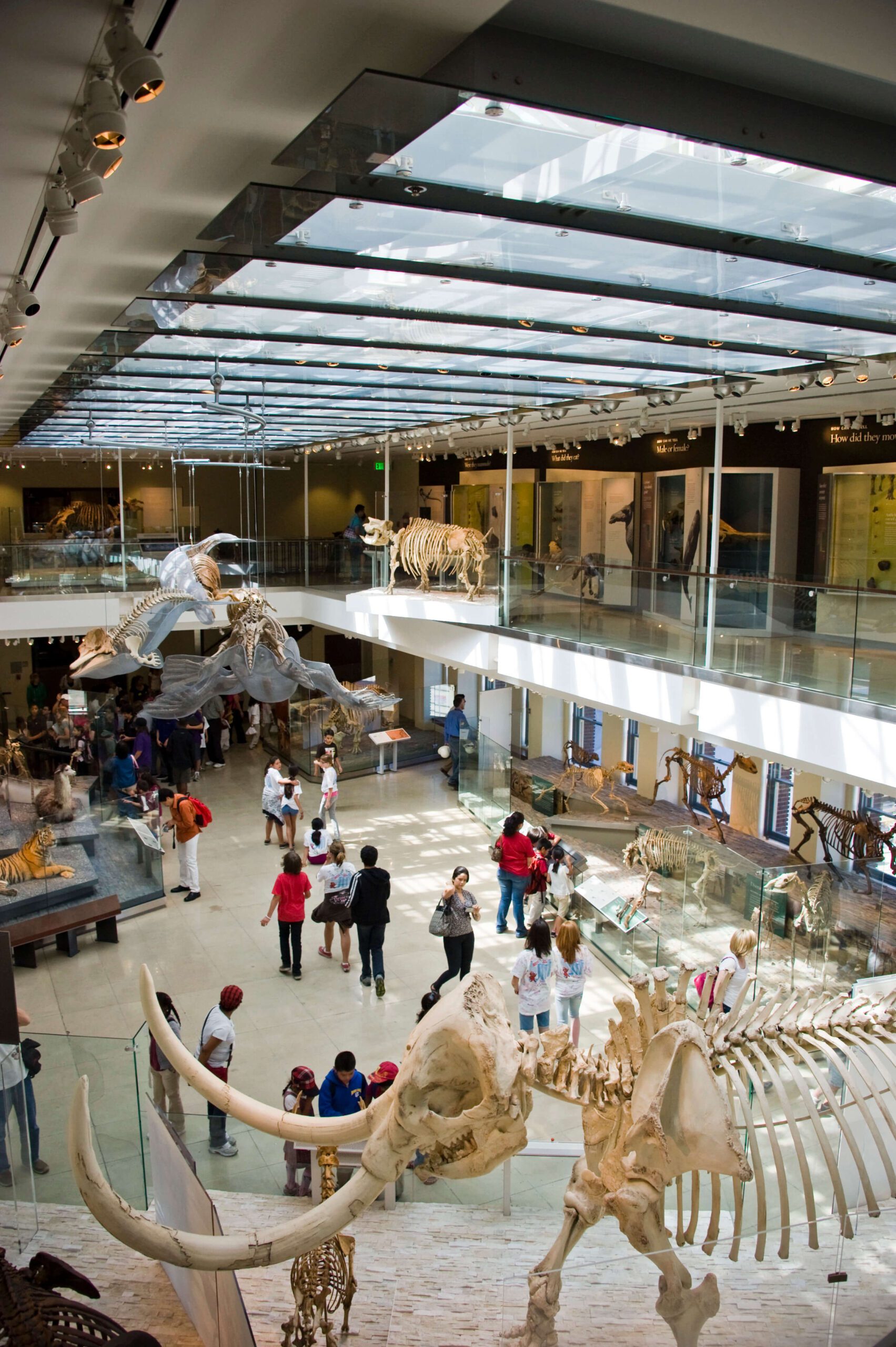
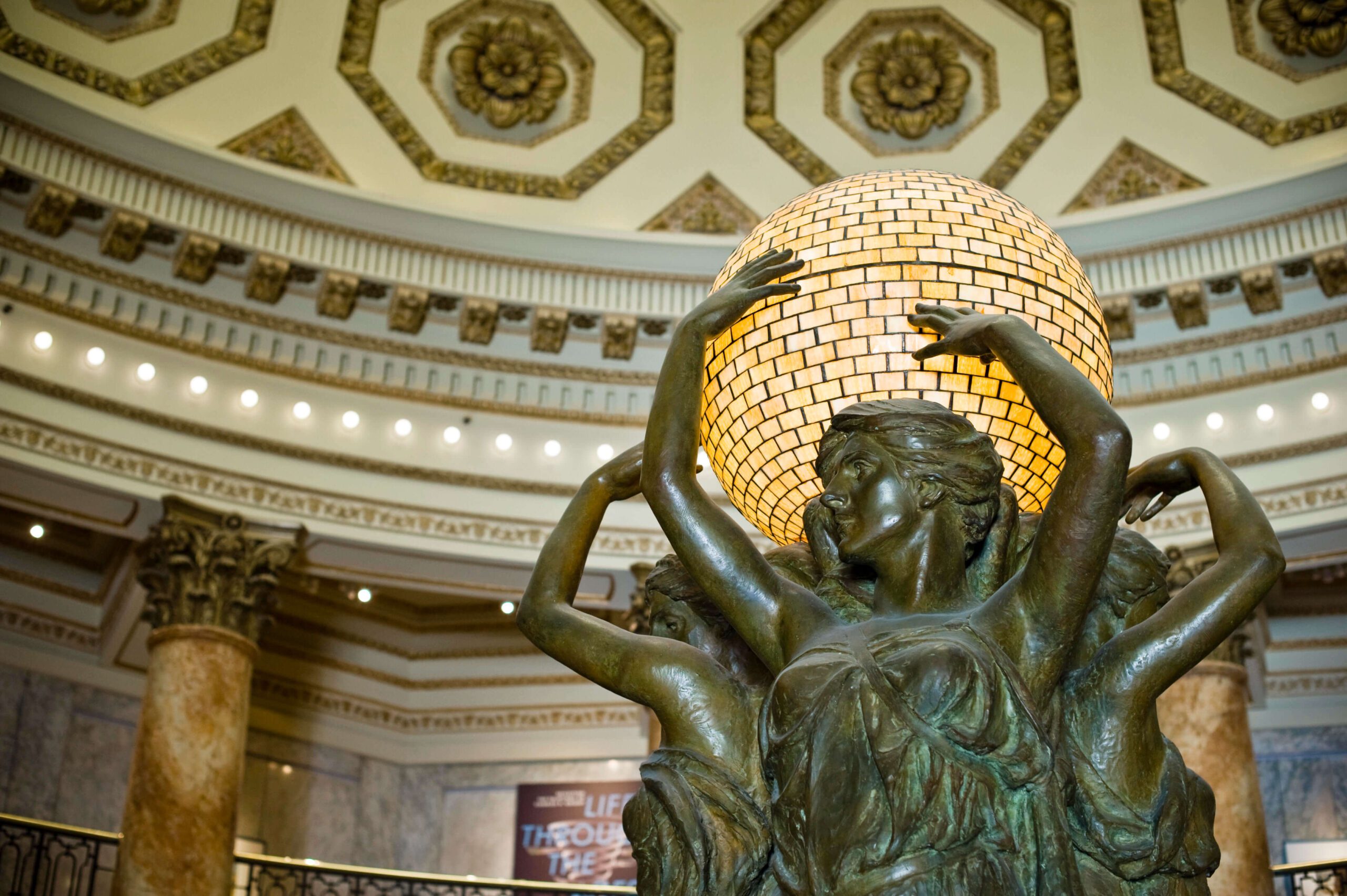
Exterior masonry walls and the building envelope in the rotunda area were considered the most important elements to the historic fabric. A novel application of bonded carbon fiber technology permitted the seismic strengthening of the building without any visible effect on the historic facade. Vertical shafts, each 6-inches in diameter, were cored into the exterior masonry walls from the roof and through the foundation. The shafts were then fitted with steel reinforcing rods and filled with a high-strength polymer resin which bonds to both masonry and steel. In addition to fortifying the walls, the seismic retrofit involved thinning the building’s heavy concrete rooftops and injecting hairline cracks with concrete to prevent water damage.
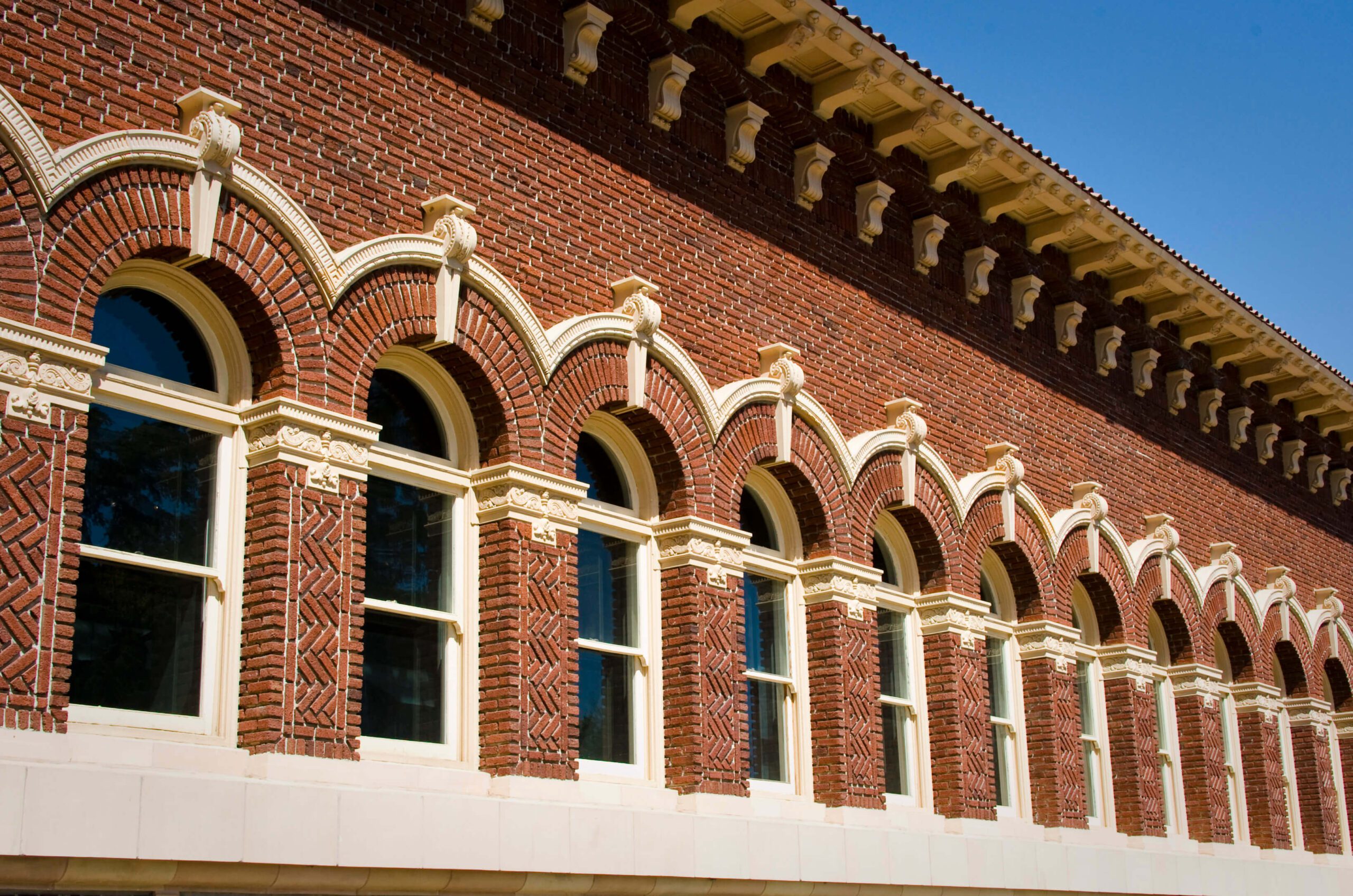
Unit 1 Addition (2011)
Built in 1924, the Museum’s Unit 1 building is among the campus’ oldest structures and was part of the initial renovation. Addressing connections and tie-ins to other adjacent structures as well as careful phasing to accommodate shifting exhibitions and visitor traffic, the engineering helped seamlessly retrofit and renovate the building to accommodate new exhibits. Subsequent work in this phase included a new multi-level and partially subterranean parking structure.
Otis Booth Pavilion and Pedestrian Bridge (2013)
Completed in time for the Museum’s centennial celebration in 2013, the new Otis Booth Pavilion and connecting pedestrian bridge were key components to creating a more inviting entrance to the Museum. Both elements are visually striking and collectively serve as a focal point. The bridge’s curved structural tube steel stretches more than 50-ft over a landscaped arroyo and garden. The glass-enclosed Pavilion, which serves as the Museum’s main entry, rises 6-stories. The pavilion is a fully immersive multimedia experience and highlights the Museum’s famous fin-whale skeleton, which is suspended in a diving position from the ceiling.
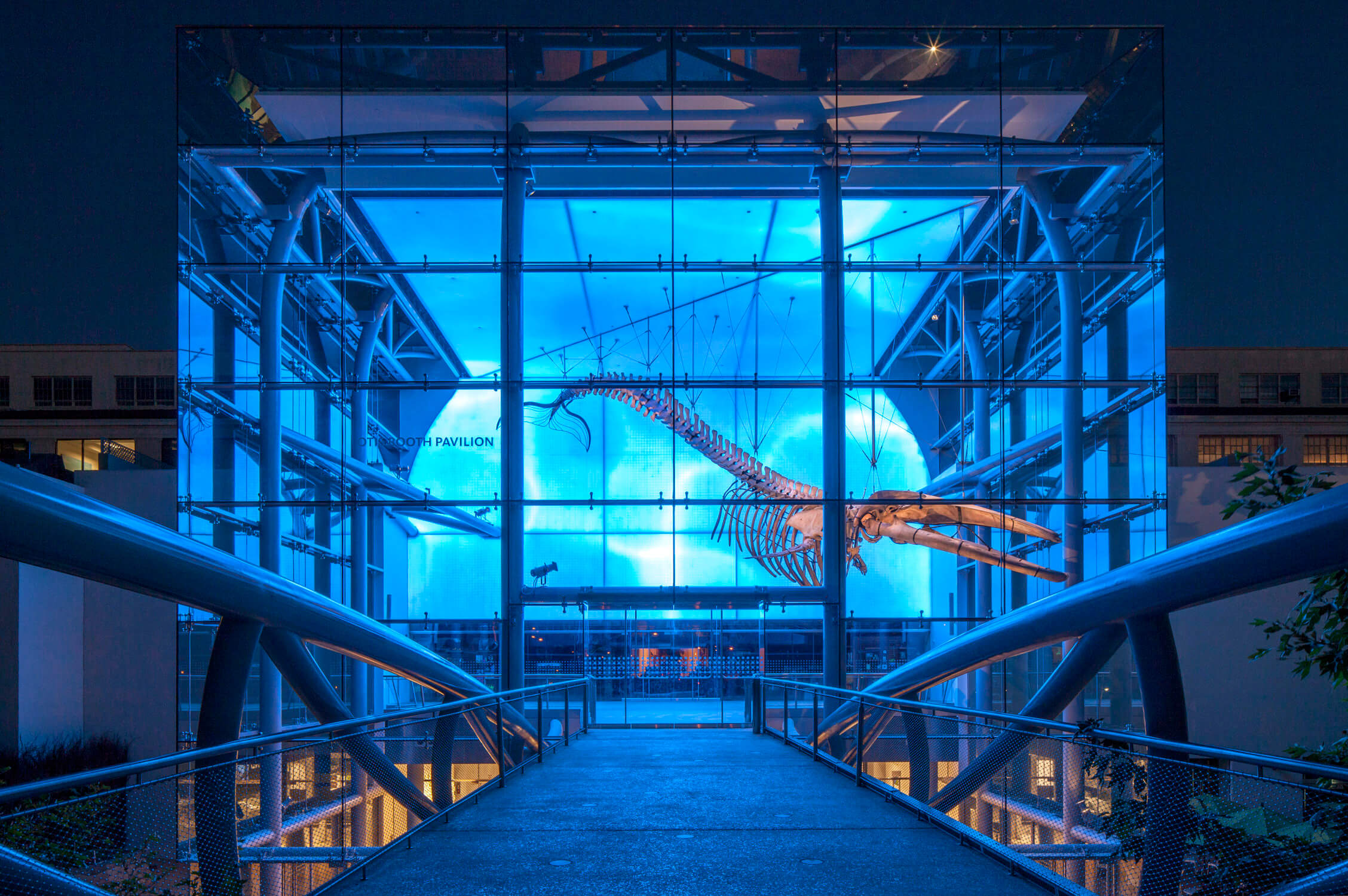
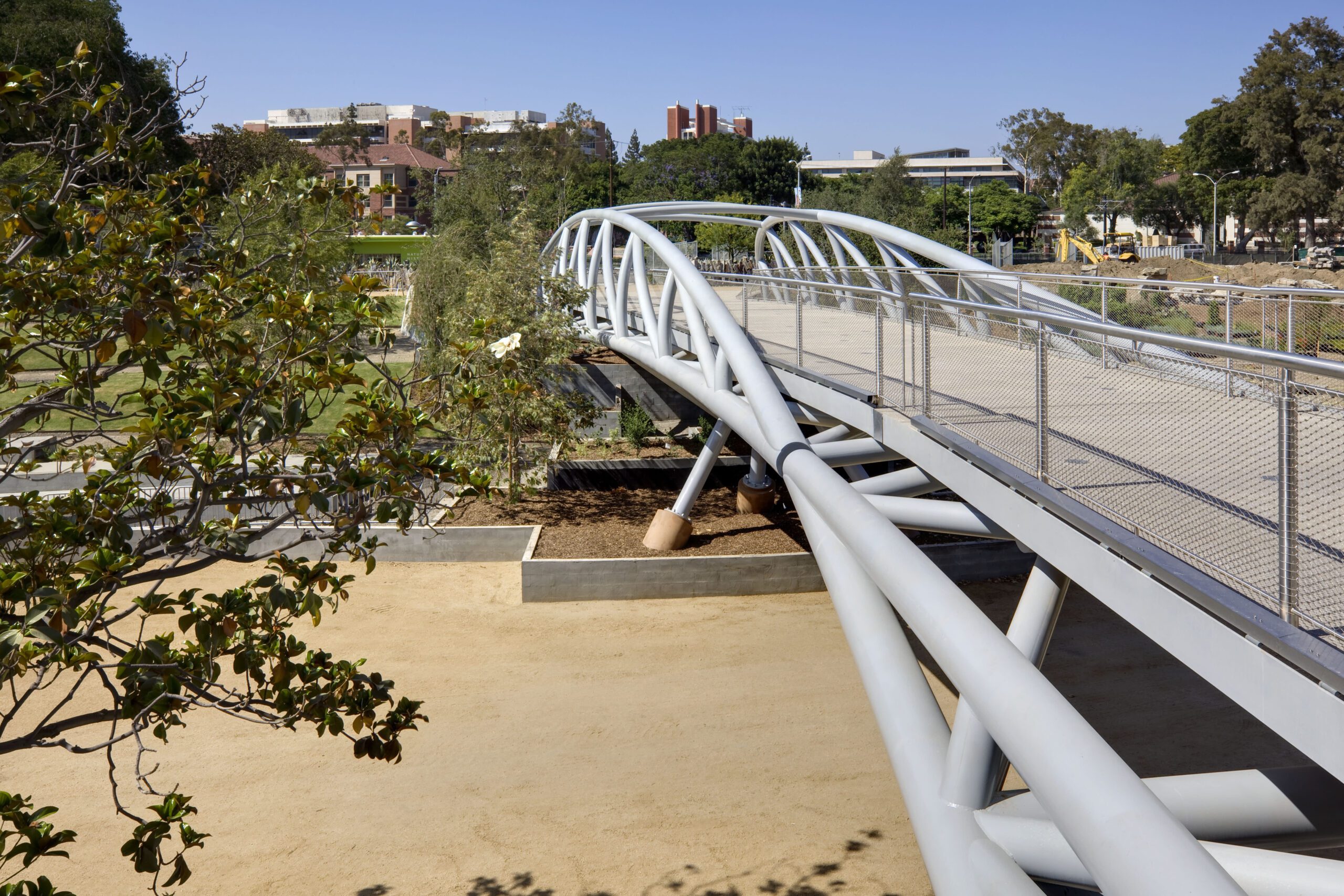
Commons Expansion (2024)
The Commons, located at the Museum’s southern edge, is a new transparent “front porch” for visitors and a connection to the adjacent Memorial Coliseum. The overall project includes nearly 50,000 square feet of renovated space in an existing gallery structure and more than 30,000 square feet of new construction in a 2-story Commons Building, much of which is glass. To accommodate exhibition spaces, a large open lobby, café, and a 400-seat theater, the structural design focused on column-free floor areas and 23-ft floor-to-floor heights that utilize 40-inch deep structural steel beams spanning 70 ft and steel moment frames with viscous dampers.
Photography: By Benny Chan and Courtesy of the Natural History Museums of Los Angeles County
